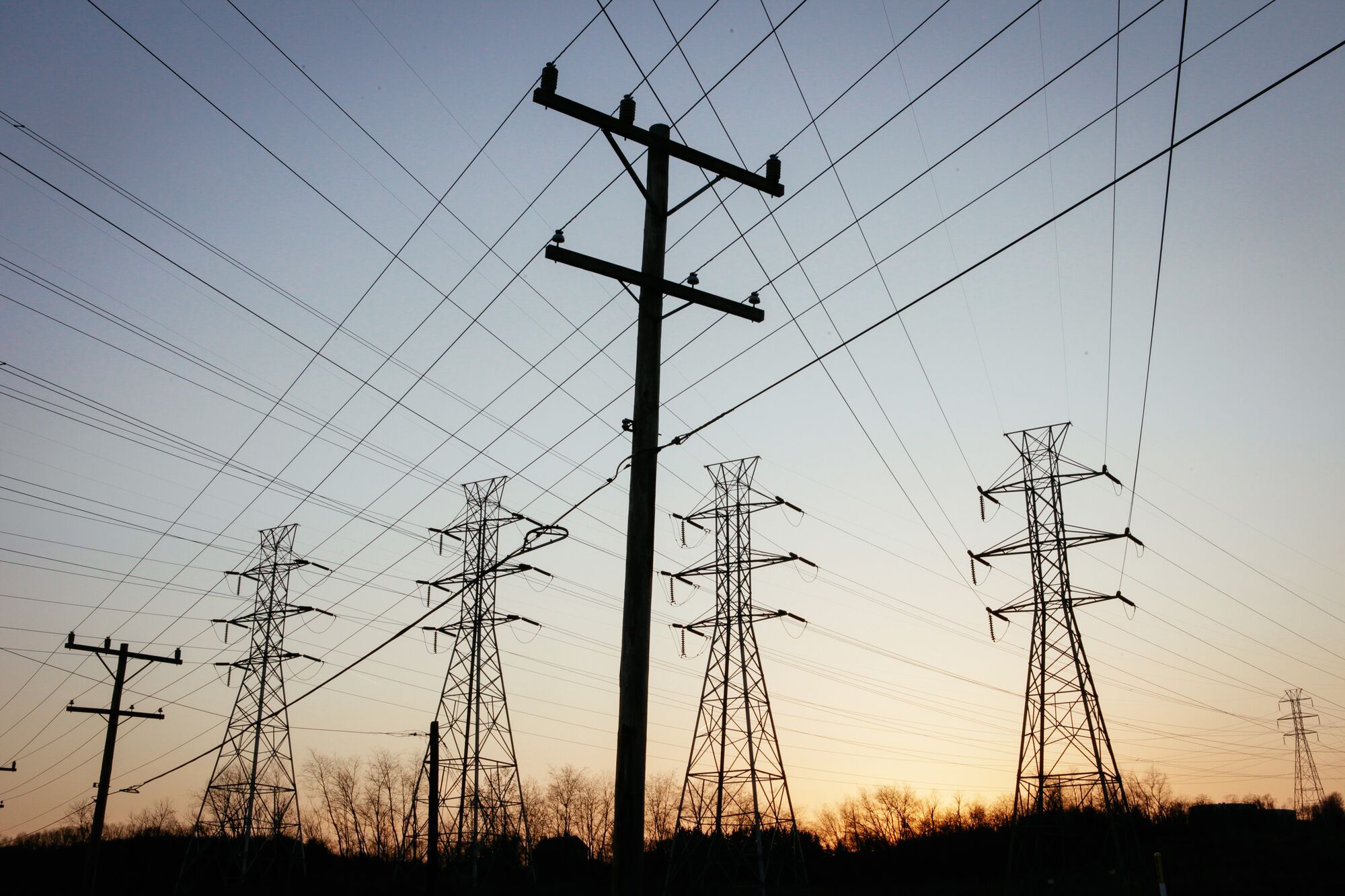What’s Holding Us Back from a Clean Energy Transition? We Don’t Have Enough Power Lines.
100% clean energy requires more electricity transmission lines. Here’s how we can remove hurdles to building them.

To avoid the worst impacts of climate change, we must generate and deliver enough clean energy to power everything — from cars and trucks to buildings and factories. But a major roadblock in the transition to a clean energy future is surprisingly basic: We don’t have enough transmission lines to effectively move the power generated at clean energy hot spots to the places where we need it.
Here’s what to know about the transmission system, the power grid, and what needs to change to achieve 100% clean power.
How does electricity transmission work?
Also known as the “electric grid,” the transmission system is a network of wires that carries electricity from place to place. In the United States there are 12 different transmission planning regions that operate the bulk of electric power grids in the U.S. and are overseen by the Federal Energy Regulatory Commission (FERC).
More than 70% of the nation’s electricity is produced by investor-owned utilities that also own most of the nation’s high-voltage transmission lines (although you paid for those lines through your electric bill).
The grid as it exists now was designed to generate electricity in urban centers by burning fossil fuels. The transition to 100% clean energy requires some upgrades and a lot of new high-voltage transmission lines. The old ways of planning and paying for high-voltage transmission lines won’t cut it.
How will building more transmission lines aid a clean energy transition?
The places with the most clean energy potential aren’t always where the power is needed most. For instance, many solar projects are built in remote deserts, and plains have enormous wind energy potential. We need to get that energy to the places where people live and work. We need to build more transmission lines to move clean energy across the country in addition to scaling up local, distributed clean energy resources like rooftop and community solar and battery storage.
At a minimum, we must double current transmission capacity by the end of this decade to transition to a clean energy economy. We must do this in collaboration with the communities that would be impacted by new infrastructure — especially communities that already face unjust environmental burdens — and without eroding bedrock environmental protections.
What is holding up transmission projects?
Construction of new long-distance transmission lines has been stalled in most regions for over a decade. We are not building new transmission lines at the pace and scale needed to keep up with proposed clean energy projects. Thousands of renewable energy projects in various stages of development are waiting years for approval to connect to the U.S. electric grid. More than 2,000 gigawatts of solar, wind, and battery storage projects are languishing in the queue, according to the Energy Department. That’s more power than the country’s current generating capacity. Earthjustice and our allies successfully pushed FERC to strengthen interconnection reforms that will speed the approval process for new energy projects, but FERC must also reform transmission planning.
The way the U.S. plans and pays for transmission projects is a significant obstacle to reaching 100% clean energy. Regions have failed to plan for and build high voltage interregional lines because they have struggled to coordinate across differences in things like planning criteria and who will pay. The existing regulatory framework does not yet prioritize construction of new transmission to drive development of necessary interstate projects.
What are the solutions?
Earthjustice and our partners released a paper outlining how federal agencies and Congress can address the transmission bottleneck and quickly build the infrastructure we need for an equitable, clean energy future for all. The solutions we’re proposing include steps to strengthen transmission planning and interconnection and speed the siting and approval of high priority projects. The government must implement these reforms while preventing harm to impacted communities and making sure they are a part of the planning process from the beginning.
Molly is a writer and editor at Earthjustice, sharing the stories of our lawyers, clients, and partners.
Earthjustice’s Clean Energy Program uses the power of the law and the strength of partnership to accelerate the transition to 100% clean energy.
